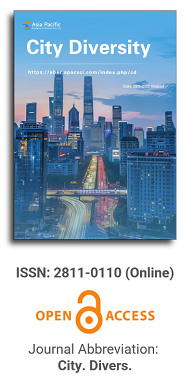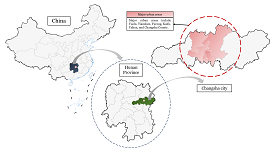
Asia Pacific Academy of Science Pte. Ltd. (APACSCI) specializes in international journal publishing. APACSCI adopts the open access publishing model and provides an important communication bridge for academic groups whose interest fields include engineering, technology, medicine, computer, mathematics, agriculture and forestry, and environment.

As China's pillar industry, the property market has suffered a considerable impact in recent years, with a decline in turnover and many developers at risk of bankruptcy. As one of the most concerned factors for stakeholders, housing prices need to be predicted more objectively and accurately to minimize decision-making errors by developers and consumers. Many prediction models in recent years have been unfriendly to consumers due to technical difficulties, high data demand, and varying factors affecting house prices in different regions. A uniform model across the country cannot capture local differences accurately, so this study compares and analyses the fitting effects of multiple machine learning models using February 2024 new building data in Changsha as an example, aiming to provide consumers with a simple and practical reference for prediction methods. The modeling exploration applies several regression techniques based on machine learning algorithms, such as Stepwise regression, Robust regression, Lasso regression, Ridge regression, Ordinary Least Squares (OLS) regression, Extreme Gradient Boosted regression (XGBoost), and Random Forest (RF) regression. These algorithms are used to construct forecasting models, and the best-performing model is selected by conducting a comparative analysis of the forecasting errors obtained between these models. The research found that machine learning is a practical approach to property price prediction, with least squares regression and Lasso regression providing relatively more convincing results.
Structure, diversity and spatial distribution pattern of significant tree species in Hefei city
Vol 3, Issue 1, 2022
Download PDF
Abstract
In order to further tap the ecological potential of urban trees, improve the diversity of tree species in urban environment, and promote the sustainable development of urban trees, this paper further analyzes the structure, diversity and spatial distribution law of the prominent tree species in Hefei city on the basis of on–the–spot identification of the prominent trees distributed in the main city. The results show that: 1) 528 significant trees are identified in the three districts, belonging to 40 species, 36 genera and 27 families, with 23 trees evaluated by qualitative index and 505 trees by quantitative index. In quantity distribution, the number of significant trees in the three districts is ranked as Yaohai District > firstringroad City > Government Affairs District. The top four tree species in relative abundance are Platanus acerifolia, Cinnamomum camphora, Ginkgo biloba and Cedar. 2) In terms of the tree age structure, most trees are 20~40 years old, and only 22 trees are over 100 years old; the ratio of evergreen to deciduous tree species is 1:3, and the ratio of plant to tree is about 7: 18; there are 23 native tree species accounting for 57.50%, but only 171 trees. 3) In terms of area distribution, the average tree height and crown area in Yaohai District are the largest, the average DBH, Shannon–Wiener index and Simpson index in the first–ring city area are the highest, and the species evenness index in Government District is the highest. 4) In terms of site types, most significant trees are distributed in urban streets, residential areas and parks, and only 11.74% of them are distributed in government organizations, schools, public facilities, scenic spots and religious land.
Keywords
References
- Wang J, Cheng L, Liu H, et al. Identification and distribution characteristics of significant trees in urban forests. Journal of Zhejiang agriculture and Forestry University. 2018; 35(2): 340–346.
- Roman LA. How many trees are enough? Tree death and the urban canopy. Scenario Journal. 2014; 4: 1–8.
- Nowak DJ, Greenfield EJ. Tree and impervious cover change in U.S. cities. Urban Forestry & Urban Greening. 2012; 11(1): 21-30. doi: 10.1016/j.ufug.2011.11.005
- Zhang H, Lai PY, Jim CY. Species diversity and spatial pattern of old and precious trees in Macau. Landscape and Urban Planning. 2017; 162: 56-67. doi: 10.1016/j.landurbplan.2017.02.002
- Bradshaw AD, Hunt WB, Walmsley T. Trees in the urban landscape: principles and practice. London: E& FN Spon; 1995.
- Lin G. Current situation and evaluation of Chinese garden tree management regulations. Chinese garden. 2013; 29(7): 113–116.
- Schmied A, Pillmann W. Tree protection legislation in European cities. Urban Forestry & Urban Greening. 2003; 2(2): 115-124. doi: 10.1078/1618-8667-00028
- Stagoll K, Lindenmayer DB, Knight E, et al. Large trees are keystone structures in urban parks. Conservation Letters. 2012; 5(2): 115-122. doi: 10.1111/j.1755-263x.2011.00216.x
- Liu S, Wu Y. Effects of urban soil compaction on chlorophyll and Photosynthetic Physiological Characteristics of tree leaves. Journal of ecological environment. 2010; 19(1): 172–176.
- Liu Yu, Xu C. Research progress of ancient tree health evaluation. World forestry research. 2013; 26(1): 37–42.
- Wang J, Xia Y, Zhao D, et al. Crown size and growth space demand of main tree species in urban forest. Journal of Beijing Forestry University. 2018; 40(3): 42–54.
- Roman LA, Scatena FN. Street tree survival rates: Meta-analysis of previous studies and application to a field survey in Philadelphia, PA, USA. Urban Forestry & Urban Greening. 2011; 10(4): 269-274. doi: 10.1016/j.ufug.2011.05.008.
- Huang Y, Sun B, Liao S, et al. Characteristics and distribution pattern of ancient tree resources in Shenzhen. Journal of plant resources and environment. 2015; 2: 104–111.
- Jin S, Sun C, Che S. Study on the relationship between ancient and famous trees and urban structure: a case study of Songjiang District, shanghai. Journal of Shanghai Jiaotong University (Agricultural Science Edition). 2012; 30(2): 17–23.
- Meyerj G. America’s famous and historic trees. New York: Houghton Mifflin; 2001.
- Zhou T, wang Y. Spatial relationship between ancient and famous trees and their follow-up resources and urban ecological network in Shanghai. China urban forestry. 2020; 18(6): 37–42.
Supporting Agencies
Copyright (c) 2022 Jia’nan Wang, Lingli Tong, Heng Zhang

This work is licensed under a Creative Commons Attribution 4.0 International License.

This site is licensed under a Creative Commons Attribution 4.0 International License (CC BY 4.0).

Prof. Mehmet Cetin
Kastamonu University,
Turkey
Polish Scientific Bibliography

